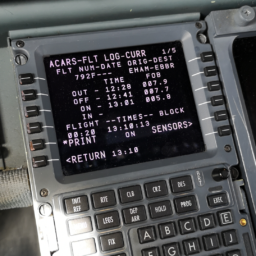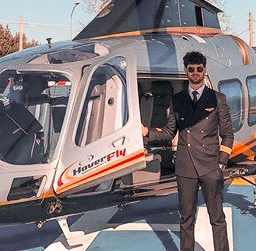
Aviation pilot shortage is looming after many pilots have taken early retirement due to the Covid-19 pandemic, some pilots have changed careers and young cadets have postponed their flight training. An impressive resume remains the key to starting your dream job!
Recruiters typically spend less than 15 seconds on poor, over-detailed, and colorless resumes. The first step to landing on the job is to impress the managers with your resume and have them call you for an interview. Not only does the design have to look awesome, but all relevant data must also be available in the blink of an eye.
You find many free and paid online web tools to prepare your resume in just 15 minutes… Not true! Creating an impressive and professional resume takes a lot more time! You need to collect all data, and you must pay attention to the details! In this blog, we’ll explain how to create your pilot resume and share tips and tricks.
CrewLounge DOCS has an advanced resume builder to generate professional, modern and slick resumes for flight crews, totally free!
Resume, Résumé or CV?
Resume and CV are often used interchangeably, but they are actually different documents!
CV comes from Latin “Curriculum Vitae” and stands for “Course of Life”. The CV is a detailed description of your studies, professional career and achievements. The document is detailed and voluminous, often 5 to 20 pages long.
Resume comes from the French word “Résumé” and is translated as “Summary”. As the word itself says, a resume is a condensed version of your CV. All relevant information to apply for the job is put on one page!
In America, Canada and the UK, the “CV” and “Resume” are different documents. In other regions, such as Europe and Asia, no distinction is made and the term CV is (incorrectly) used for resume. It is important to check whether you should enclose a Resume or a CV with your application! In this blog we use Resume/CV as a reference to the “one page summary”.
What should be on your Resume/CV?
Your Resume/CV should always contain the following information:
- Profile & Contact Details
- Flying Experience, Certificates & Ratings
- Work Experience
- Soft Skills
If relevant to the position or requested by the recruitment department, you can add additional information, such as:
- Languages
- Education
- Motivation
You do not put References on your Resume/CV, because a Resume/CV by definition describes yourself and not the contact details of third parties. References should therefore be sent in a separate message.
Getting past the ATS
Major airlines often use Applicant Tracking System (ATS) software to automatically scan, filter, and rank resumes. The ATS separates the wheat from the chaff, especially if there are many candidates for the same position.
It is important that your Resume/CV meets the technical requirements with the right keywords to pass ATS screening. Self-designed PDF resumes often don’t make it past the ATS, but CrewLounge DOCS does!
Profile & Contact Details
Make sure all contact details are in the header of your Resume/CV. Omit social media links, however include your LinkedIn URL instead for added credibility.
In Europe and Asia it is common to add a photo of yourself to the CV, while in other continents this is less common. Keep in mind that it is human nature to be biased based on what we see. This prejudgment is different when the recruiter meets you in person during the interview, where your body language, your tone and use of words are more decisive. If the company doesn’t ask for a photo, consider omitting it so the recruiter can objectively focus on the content of your resume.
Flying Experience
Your overall flying experience is the most important hiring decision factor. Most vacancies require a minimum number of flight hours and/or experience on certain aircraft types.
It is best to list your flight hours per aircraft type in reverse chronological order. Your current or last aircraft type should appear at the top of the list. CrewLounge DOCS automatically retrieves flight hours from your pilot logbook and applies reverse chronological sorting! Manual entry is also available, if you are not using the CrewLounge PILOTLOG logbook app.
Do not list any flying experience that is not relevant to the vacancy. There is no need to mention “200 hours of glider tow” when applying for a job with an airline.
To demonstrate that you meet the job requirements, it is important to also state your Certificates & Ratings. Also, here you only mention the relevant technical skills, not your diploma for schoolteacher or coast guard.
Work Experience
Similar to flying experience, you should sort your employment history in reverse chronological order. Start with your current or last position and work your way back. Keep it short and easy to read. Don’t go too far back in time (maximum 10 years) and omit any non-flying work experience, unless you think it will add value.
It is not necessary to state the type of contract, or the reason for your dismissal from the previous employer. However, be prepared for such questions during your interview.
Soft Skills
An autopilot can fly an airplane from A to B, but has no affection for the company culture. And even though pilots are expected to do their job flawlessly, we’re still human. Aviation companies are not looking for pilot robots that meet technical requirements, but above all they want employees to represent the culture and express the values of the company.
The Soft Skills section gives you the opportunity to personalize your Resume/CV. Here is a list of typical skills for professional pilots. Do not list them all in your Resume/CV, but take the skills that are listed in the job description!
| Teamwork | CRM |
| Communication | Leadership |
| Decision making | Problem solving |
| Aircraft technology | SOP / Regulations |
| Situational Awareness | Time Management |
| Analytical Thinking | Adaptability |
| Flexibility | Customer Minded |
Every company has its own personality. You should reflect that personality by using the right style in your Resume/CV, and also later in your interview. Write two or three well-crafted sentences that describe the skills you have to become an ambassador for your prospective employer and add value to the company’s success.
Languages
English is the official language in aviation, but that is not the case everywhere. The employer can impose other languages in the job requirements.
CrewLounge DOCS calculates your language skills for speaking, listening and reading on a scale of 6 points. You can also indicate your Radio English Language Proficiency (ELP) score on your Resume/CV.
Education
If not requested, it is not necessary to state your education trajectory. It is better to use the limited space on that single page for your Soft Skills.
If you don’t have any professional experience yet and you are applying for your first pilot job, you can still stand out by showing “who” you are! List your full educational background, including any bachelor’s degrees and college or high school diplomas. Again, stand out by expressing your eagerness to be part of the company!
When stating your education, only mention diplomas that are relevant to the position. And don’t use abbreviations that no one can understand without googling.
CrewLounge DOCS offers the possibility to insert your training and education, and automatically sorts the trajectory Date Descending.
Motivation
Of course you don’t apply for a pilot’s seat without being motivated. However, the question is whether your motivation should be printed on the Resume/CV. Usually, you will have to write a separate motivation letter.
If that is not the case, we advise you not to put an extensive motivation on your Resume/CV. Instead, let your Soft Skills express your eagerness to join this particular company, and not just any pilot job with any company!
Read more about CrewLounge DOCS on the website (here). Create your professional resume (here) and stand out from other candidates!
Share this article with your friends and colleagues:





















